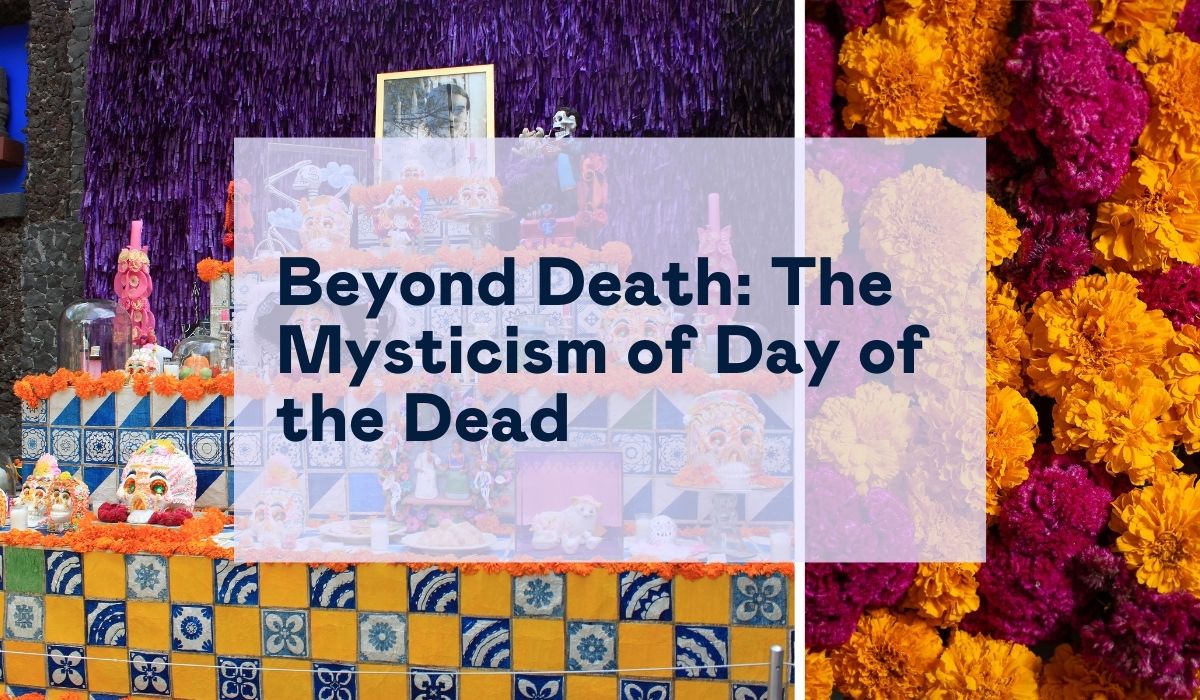As October draws to a close, Mexico prepares for one of its most cherished traditions: Día de Muertos (Day of the Dead). This iconic celebration, deeply rooted in Mexican history and culture, brings families together to honor and celebrate loved ones who have passed. Far from a somber occasion, it’s a vibrant expression of life, memory, and joy that captivates people worldwide.

Origins and History
Día de Muertos traces its roots to the ancient civilizations of Mexico – the Aztecs, Maya, and other indigenous peoples who viewed death not as an ending, but as a natural part of life’s cycle. These early cultures celebrated their ancestors through elaborate rituals and offerings, typically during the harvest season. When Spanish colonizers arrived in Mexico, these indigenous beliefs merged with Catholic traditions, creating the modern celebration that coincides with All Saints’ Day and All Souls’ Day on November 1 and 2.
The Sacred Symbols of Día de Muertos
Every element of Día de Muertos carries deep symbolic meaning. Calaveras, the iconic sugar skulls, represent both death and rebirth, serving as a powerful reminder of life’s cyclical nature. These intricately decorated skulls often feature bright colors and patterns, celebrating the vibrancy of life even in death.
Ofrendas, or altars, form the heart of the celebration. Families carefully construct these multi-tiered displays in homes and cemeteries, adorning them with photographs, candles, and personal items belonging to their departed loved ones. Traditional offerings might include the deceased’s favorite foods, drinks, and personal items, creating a bridge between the worlds of the living and the dead.

The brilliant orange cempasúchil flowers, known as marigolds, play a crucial role in the celebration. Their intense color and strong fragrance are believed to guide spirits back to the world of the living. These flowers often create paths leading to ofrendas, ensuring loved ones can find their way home for the celebration.
Papel picado, the delicate paper cutouts that flutter in the breeze, symbolize the fragility of life and the wind’s element. These colorful banners often feature intricate designs of skulls, flowers, and other traditional motifs, adding to the festive atmosphere while reminding us of life’s impermanence.
Regional Celebrations Across Mexico
While Día de Muertos is celebrated throughout Mexico, each region adds its own unique touch to the festivities. Mexico City hosts one of the country’s most spectacular parades, with elaborate floats, costumed dancers, and giant puppet sculptures parading through the streets. The parade, a relatively recent addition inspired by the James Bond film “Spectre,” has quickly become a beloved tradition.
In Oaxaca, the celebration is particularly elaborate, with the city’s artistic heritage on full display. Streets come alive with comparsas (processions), while homes and public spaces showcase intricate altars that combine traditional elements with contemporary artistic expression.
The region of Michoacán, especially around Lake Pátzcuaro, is famous for its nighttime cemetery vigils. On the island of Janitzio, families gather in candlelit cemeteries, creating an ethereal atmosphere as thousands of flickering flames illuminate the night. The sight of boats crossing the dark waters, carrying visitors and locals to participate in the vigils, creates an unforgettable scene.
Traditional Foods and Their Significance
Food plays a central role in Día de Muertos celebrations. Pan de muerto, a sweet bread decorated with bone-shaped pieces, is perhaps the most recognizable treat of the season. This soft, orange-scented bread symbolizes the circle of life and is often placed on ofrendas or shared among family members.

Tamales, wrapped in corn husks or banana leaves, represent a connection to Mexico’s pre-Hispanic past. These steamed parcels of corn dough filled with meat, cheese, or sweet ingredients are both practical (they’re easy to transport to cemeteries) and deeply traditional.
Mole, a complex sauce made with dozens of ingredients including chocolate and various chilies, represents the mixing of indigenous and European traditions. This labor-intensive dish is often prepared for special occasions and celebrations, including Día de Muertos.
Global Impact and Modern Celebrations
In recent years, Día de Muertos has gained international recognition, particularly following the release of Pixar’s “Coco” in 2017. The film’s touching portrayal of the holiday’s traditions and meanings helped spread understanding and appreciation of this unique celebration worldwide.

Communities across the globe now host their own Día de Muertos events, from altar exhibitions in museums to sugar skull decorating workshops in schools. While these international celebrations may differ from traditional Mexican observances, they share the core values of remembrance, family, and the celebration of life.
Participating in the Tradition
Whether in Mexico or abroad, there are many meaningful ways to participate in Día de Muertos. Creating a simple altar at home with photos and mementos of loved ones who have passed can be a powerful way to honor their memory. Cooking traditional foods, learning about the holiday’s history, or attending local cultural events can help connect with the spirit of the celebration.
The holiday’s emphasis on remembrance and celebration rather than mourning offers a unique perspective on death and loss. It reminds us that our loved ones live on through our memories and that honoring their lives can bring joy rather than solely sorrow.
As November 1 and 2 approach, millions of people in Mexico and around the world prepare to welcome the spirits of their loved ones back for a brief reunion. Through colorful decorations, meaningful traditions, and shared memories, Día de Muertos continues to demonstrate that love transcends death and that celebration can coexist with loss.

This beautiful tradition teaches us that death is not the end of our relationships with loved ones, but rather a transformation. In celebrating Día de Muertos, we acknowledge that those who have passed remain an important part of our families and communities, their memories continuing to influence and inspire future generations.
Day of the Dead offers a unique glimpse into Mexico’s deep-rooted traditions. Experience this vibrant celebration in its most authentic locations with Shuttle Central! We’ll transport you comfortably to every special corner, letting you fully immerse in the colors, aromas, and flavors of Día de Muertos. Discover the magic for yourself—we’ll be waiting!


Leave a Reply